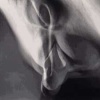Bio
Jack Butler’s hybrid practice uses the means and methods of visual art to produce research in two domains – medical science (embryogenesis primary research and
the current project “Occam’s Hand”, at the intersection of art and medicine) and collaborations with Inuit artists (Art & Cold Cash). With degrees in visual art and
philosophy, Butler exhibits internationally with work in public and private collections including the National Gallery of Canada. Butler has taught at Carnegie Mellon
University, Banff centre for the Arts, The Department of Philosophy at the University of Western Ontario, and most recently as adjunct faculty in the Healthcare
Technology and Place (HCTP) programme at the University of Toronto.
Artist’s Statement
I draw. Drawing-as-process has taken me into diverse media for the realization of my ideas – extended into sculptural modeling, computer animation, video
installation and performances. I produce hybrid research in two domains – medical science (primary research in human embryogenesis) and collaborations with
Inuit artists (the current project, “Art & Cold Cash”). These two life practices, dominating my exhibition history and my public presence, have been progressively
generating a third in-between ‘space’: internal dialogue – intimate, body-centered, hesitant, sexual.
One strong cultural and professional context for my research and production is my collaborations, since 1969, with Inuit artists in Nunavut. Currently this
collaboration takes the form of art-based research in Baker Lake (Qamanituaq) and exhibitions as a member of the ve-person collective Art & Cold Cash. A print
record of these researches and exhibitions, the book Art and Cold Cash, was published by YYZ Books in January 2010.
I have since 1976 participated as a visual artist in medical research projects focusing on human embryological development; work published in scienti c contexts.
Parallel with these projects, I produce studio based installations that deconstruct my scienti cally focused research. The video projection installations, Genesis of
Breath, and Fatemap: Would you like to know what will happen? are current examples.
And the third in-between space is motivating Dark Body, a small, highly focused exhibition drawn from ve projects at the intersection of art and medical research.
Dark Body culminates in the interactive touch sensitive audio drawing titled Occam’s Hand, which tracks my personal recovery from cervical spine surgery through
drawing and songs created from sounds recorded in the MRI together with my voice. The ve interactive songs that play in response to the instruction – “Caress the
drawing rmly”, were composed and recorded by sound artist Chandra Bulucon.

Comments are closed